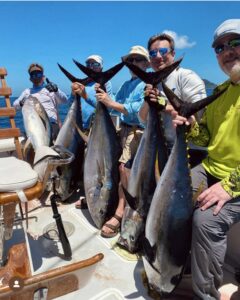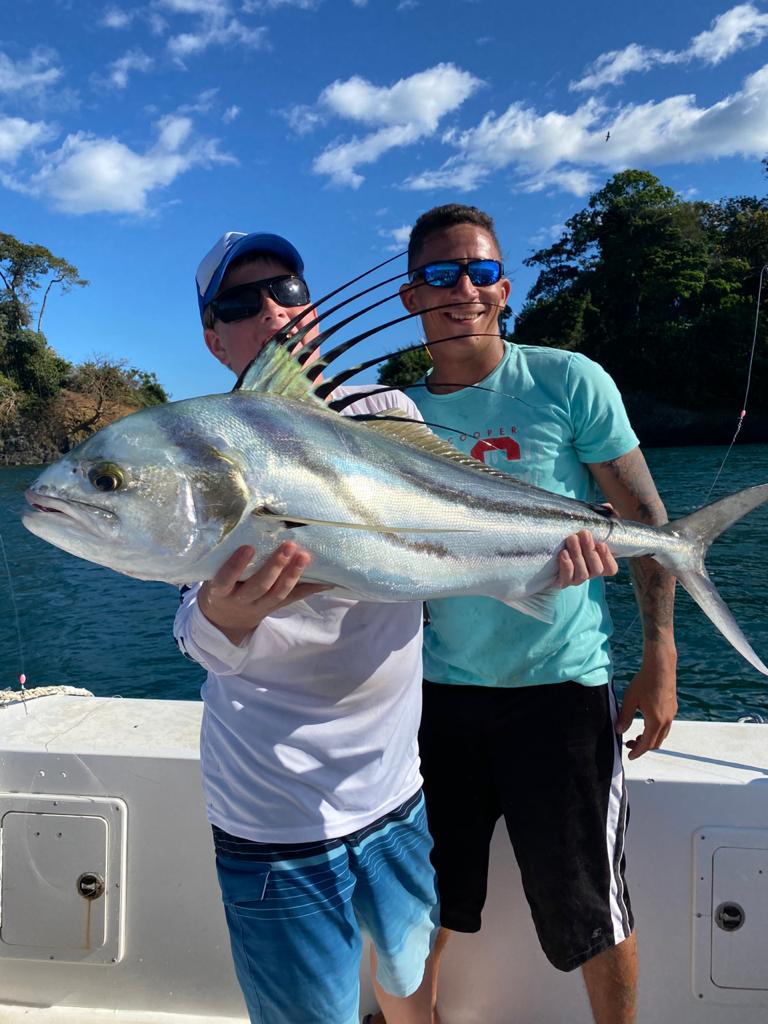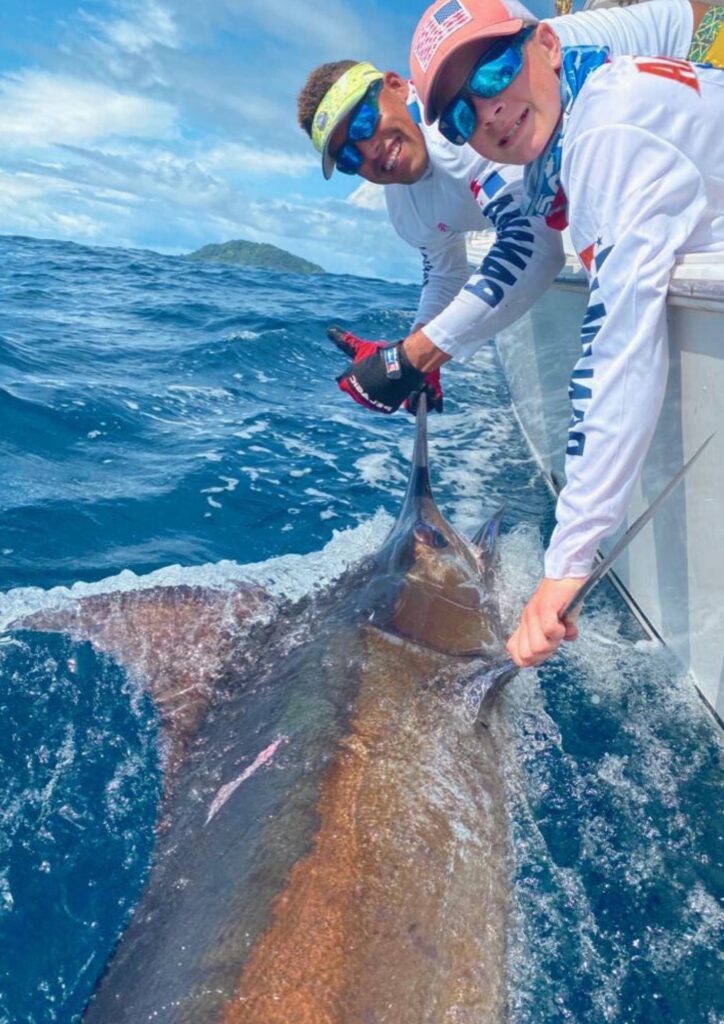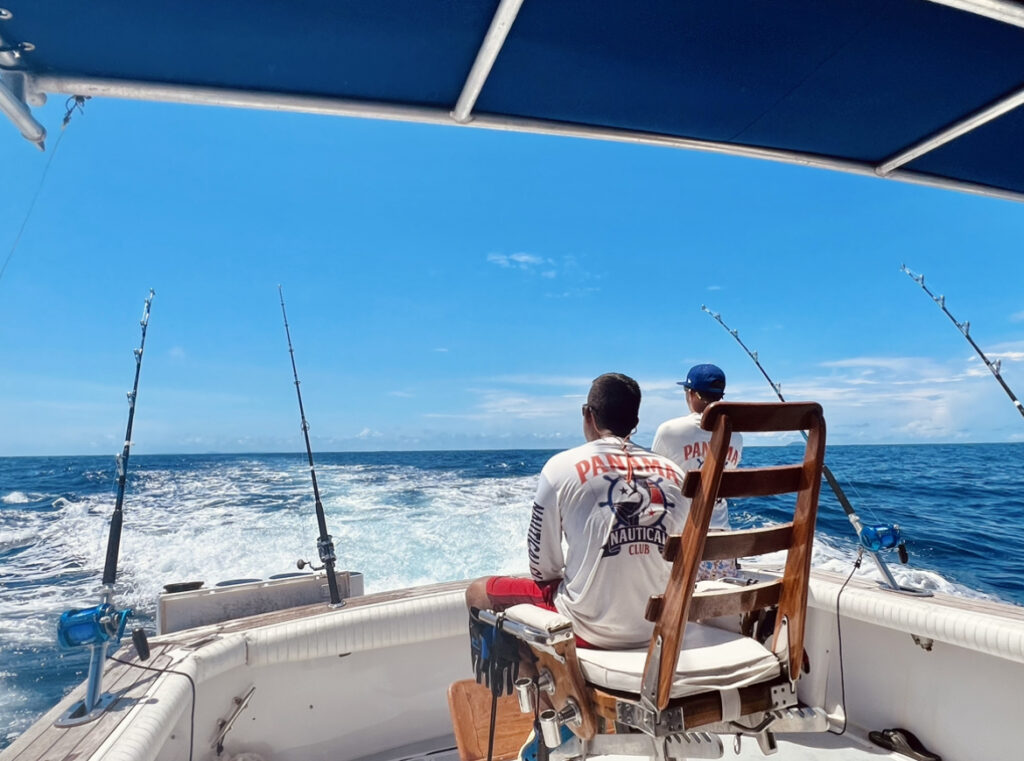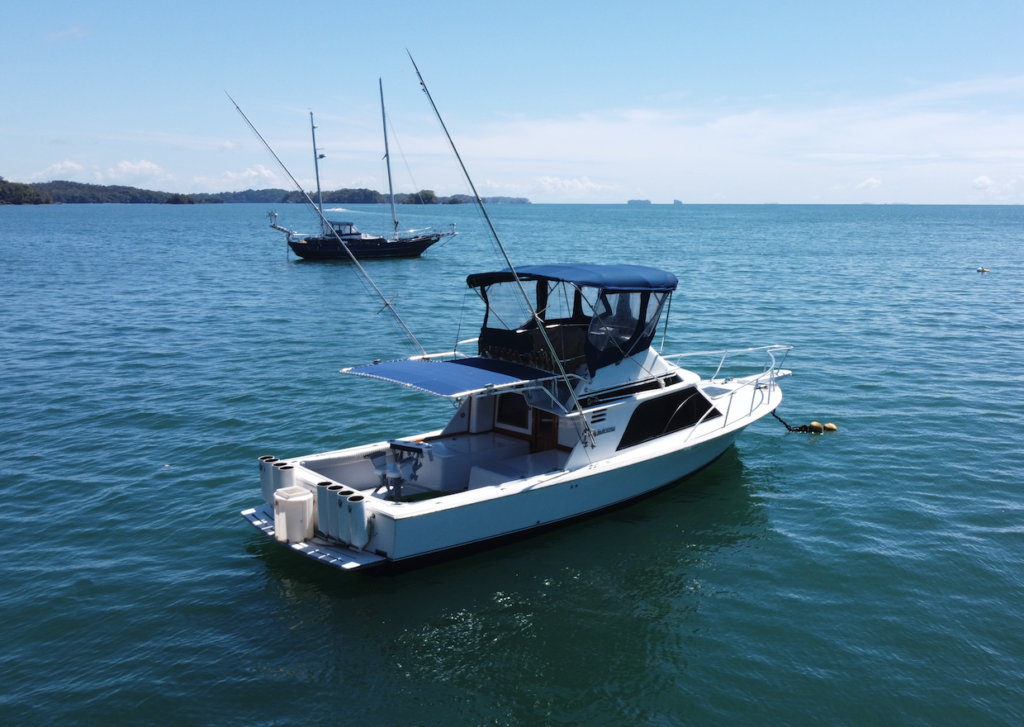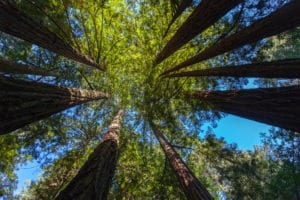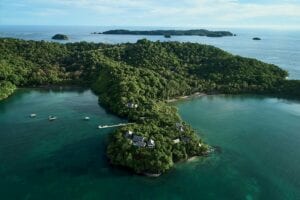Blue Marlin
December through April is the season to catch blue marlins in Panama, which you can find around Hannibal Bank and Isla Montuosa. Unlike the black marlin, the fight starts as soon as you lure one. They are smaller than their black marlin counterpart. Males usually do not surpass 400 pounds, while females reach up to 1,980 pounds, making them the trophy fish. Most of their lives they live in the open sea without coming near the shore. They look similar to the black marlins, but maintain their blue color when caught and have stripes. Another difference is that blue marlin pectoral fins fold easily, while black marlin’s fins stay rigid.
Black Marlin
The best Central America fishing for Black marlin is hands down Panama. Black marlin is one of the most sought-after game fish due to their size, which can reach up to 15.3 feet (4.65 meters) and weigh up to 1,650 pounds. The “Pearl of the Ocean” is a strong fighter that lives in the Pacific. It is the 9th fastest animal in the world and the fastest fish, reaching speeds of 80 mph (129 km/h). Unlike the blue marlin, the black marlin does come closer to the shore near reefs and landmasses. In Panama, you can find them in Hannibal Bank and near Coiba. Although they are a year-round species, the best months to catch them are March, April, August, September, and October. To catch them, we use live bait such as mackerel, bonito or small yellowfin tuna. When you catch one it will turn black, but when it is alive it is dark blue and white making it easy to confuse with the blue marlin.
Dorado
Many refer to Dorado as dolphin fish and Mahi-mahi which means “very strong” in Hawaiian. November and December are specifically good months where you can catch them weighing between 40 to 60 pounds. The best time for fishing dorado in Central America is from October through February. The worse months to catch them are May through August. You can find them inshore and offshore. Usually, they swim in schools of fish except for the large “bull” dorado males. They are fighters and tend to jump in the air showing their colorful skin.
Wahoo
The best time to catch wahoo in the Gulf of Chiriquí is from September to December. If you are looking to catch this fish, then you should not come from March through May when conditions are poor. Mornings are the best time to catch them, so it is best to get an early start. This prized game fish is fast and long. They can swim up to 60 mph and grow up to 8.2 feet (2.5 meters) in length. It is silver in color with blue in its back and stripes which go down its body. People confuse them with barracudas since they both have razor-sharp teeth.
Yellowfin Tuna
There are many species of tuna worldwide, but in Panama, you will find the yellowfin tuna, also referred to as “ahi tuna”. This tuna lives in tropical waters and is a fast and strong fish due to its shape. It is easy to distinguish this colorful fish since it has a silver belly with metallic blue on its top and yellow fins, tail, and stripes. Yellowfin Tuna can range in weight from 10 to 400 pounds. If you want to catch bigger fish, it’s best to use live bait and wait till they tire out to reel them in. They travel in schools of their own kind or with other species including dolphins, whales, and whale sharks. The best time to catch them is from March through July, although fishermen can find them throughout the year. To find them, we usually head offshore to Isla Montuosa, Hannibal Bank or Isla Jicaron.
